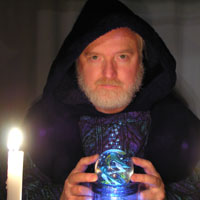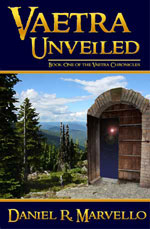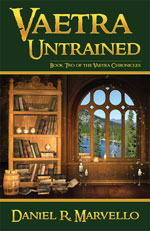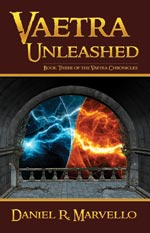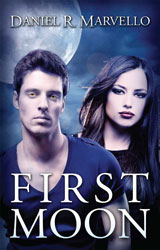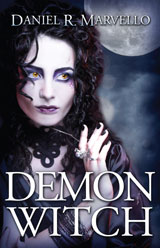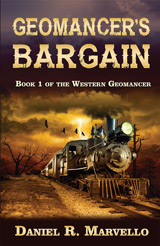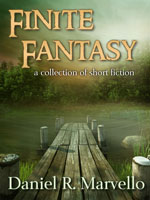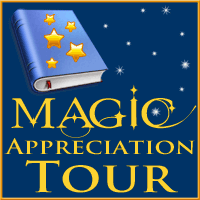To write a swords and sorcery novel, you need to have sorcery in there somewhere. And to have sorcery, you need magic.
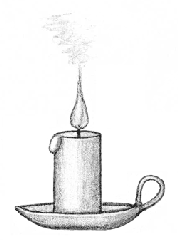 I figure every fantasy writer struggles with how to represent magic in their work. On the one hand, you want magic to behave predictably so it seems more believable, at least in the context of the story. On the other hand, hey, it’s magic! All you really need to do is establish that there’s a magical force “out there” and certain people are able to manipulate it.
I figure every fantasy writer struggles with how to represent magic in their work. On the one hand, you want magic to behave predictably so it seems more believable, at least in the context of the story. On the other hand, hey, it’s magic! All you really need to do is establish that there’s a magical force “out there” and certain people are able to manipulate it.
But what is magic, anyway? Well, I’d argue it’s all about manifestation. A mage is someone who can make something happen in the physical world without doing it “manually.” For example, lighting a candle with a match is mundane, but lighting a candle with a word and a wave of your hand, now that’s magic.
Magic Defined
If you do a definition search on the term “magic” (i.e. “define: magic” in Google), you get some pretty vague responses. According to Princeton University, magic is “any art that invokes supernatural powers.” For that definition to make any sense, you have to look up “supernatural:” not existing in nature or subject to explanation according to natural laws.
Flipping things around a little, you have Arthur C. Clark’s Third Law, which is, “any technology sufficiently advanced is indistinguishable from magic to the uninitiated.” Put in the context of Tolkienesque fantasy, you could say that natural laws do govern the workings of magic, but most people just don’t understand or recognize those laws.
All of this lead me to the conclusion that it isn’t necessary to define the Laws of Magic because in doing so, you’ve just created new natural laws. If it conforms to natural laws, then by definition, it isn’t magic any more!
[This is about the point in the discussion where my wife would shake her head, mutter something about me being too analytical, and wander off.]
Framework or Straight-Jacket?
Nailing down the laws of magic is also a bit risky. As soon as you define how magic works, you limit how it can be used, you have to be consistent in your writing about magical events, and you open yourself up to the possibility of continuity errors in your story. But I’ve found in my own reading that I like it when the author puts a framework around how magic works and limits its power.
Most authors do put limits on the practice of magic. For example, silencing or tying a mage’s hands prevents the mage from working magic. Doing that allows the author to place otherwise all-powerful characters in perilous circumstances.
Pick a Direction
So, I had a decision to make: how far do I go with defining how magic works in the fantasy world I’m building?
I decided to go pretty far. If you know me, this doesn’t come as a big shock. Creating a framework for magic is exactly my idea of having fun.
I believe that readers will enjoy discovering the laws of magic along with my main character, who starts off knowing very little about them. I also believe that certain other readers will enjoy knowing the “behind the scenes” framework that drives the use of magic in my stories.
Over time, this blog will serve as a sort of compendium for my stories. My only concern is that some of this information could serve as a spoiler for certain readers who prefer to experience the unfolding of a fantasy world from a position of total ignorance.
With that in mind, I’m going to publish my world-building and story background information into separate articles on this site. I’ll link to them from my blog posts, and you can decide for yourself how much you want to know about what’s going on behind the scenes.
Introducing Vaetra
If magic is by definition “supernatural,” then having “natural laws of magic” is an oxymoron. So, if I’m going to turn magic into a defined system of power with natural laws, it seems proper that I should give the phenomenon a name.
I started with “vita” because means “life” in Latin and Italian, and my system of magic is based on energy produced by life forms. I played with a few variations on the word, such as veeta and vaeta, but nothing really “rolled off the tongue” until I tried “vaetra.” It’s easy to say (vay’-trah) and spell, and I just like the way it sounds.
I’ve started putting together the rules for how vaetra works in my fantasy world. Just for fun, I decided to write up the rules as if they were instructional scrolls for beginning students of sorcery. The series of scrolls is part of a curriculum called Sources and Flows of Vaetra. You’ll find links to these scrolls as I produce them in the side bar under the post category of “Theory of Vaetra.”
Volume 1 of the scroll series is The Principles of Vaetra. This scroll talks about where vaetra comes from and how it can be manipulated. Here’s a link:
Read it now, or wait for the information to be revealed during the course of the story. The choice is yours.
